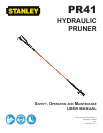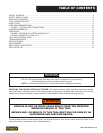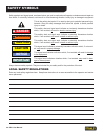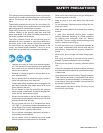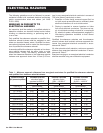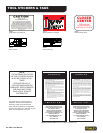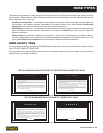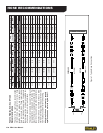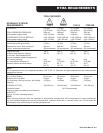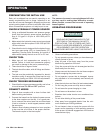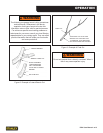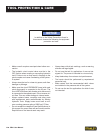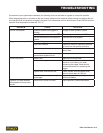
ELECTRICAL HAZARDS
PR41 User
Table 2 – Minimum approach distances to energized
arborist trainees.
Nominal Voltage
1
Distance
m
0.0 – 1.0 10–00 3.05
1.1 – 15.0 10–00 3.05
15.1 – 36.0 10–00 3.05
36.1 – 50.0 10–00 3.05
50.1 – 72.5 10–09 3.28
72.6 – 121.0 12–04 3.76
138.0 – 145.0 13–02 4.00
161.0 – 169.0 14–00 4.24
230.0 – 242.0 16–05 4.97
345.0 – 362.0 20–05 6.17
500.0 – 550.0 26–08 8.05
785.0 – 800.0 35–00 10.55
1. Exceeds phase-to-ground.
The tie-in position should be above the work area and
located in such a way that a slip would swing the arborist
away from any energized electrical conductors or other
the tree that is away from energized electrical conduc-
tors as required in Tables 1 and 2.
Footwear, including lineman’s overshoes, having electri-
cal-resistant soles, shall not be considered as providing
any measure of safety from electrical hazards.
Rubber gloves, with or without leather or other protec-
tive covering, shall not be considered as providing any
measure of safety from electrical hazards.
Ladders, platforms and aerial devices, including insulat-
ed aerial devices, shall be subject to minimum approach
distances in Table 1 and 2.
Aerial devices and attached equipment (such as chip-
pers) contacting energized electrical conductors shall be
considered energized. Contact shall be avoided, except
where emergency rescue procedures are being carried
out. Emergency rescue should be performed in accor-
dance with 4.3.
STORM WORk AND EMERGENCY
CONDITIONS-LINE CLEARANCE
Line clearance shall not be performed during adverse
weather conditions such as thunderstorms, high winds
and snow and ice storms.
clearance arborists trainees performing line clearance
in the aftermath of a storm or under similar conditions
shall be trained in the special hazards associated with
this type of work.
Line-clearance operations shall be suspended when
storm work or emergency conditions develop involving
energized electrical conductors. Electrical system own-



